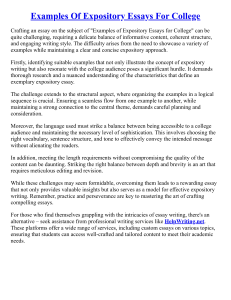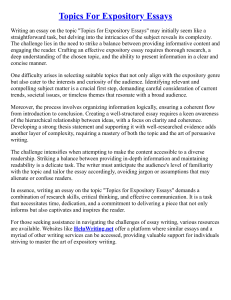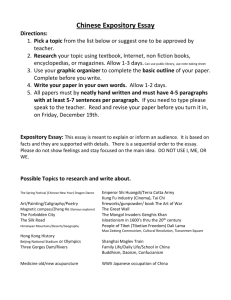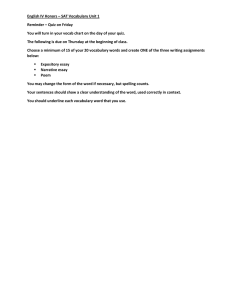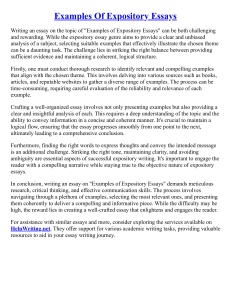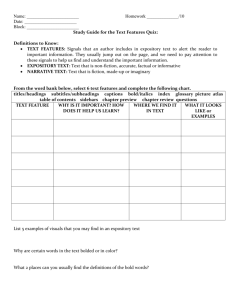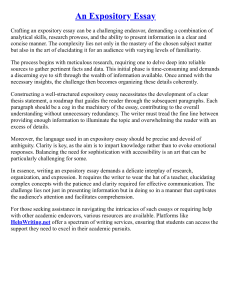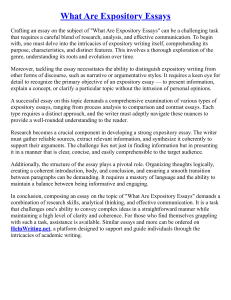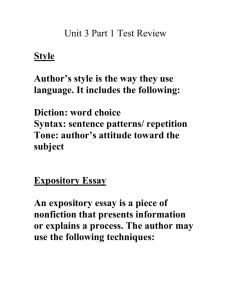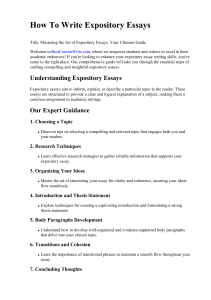expository essay
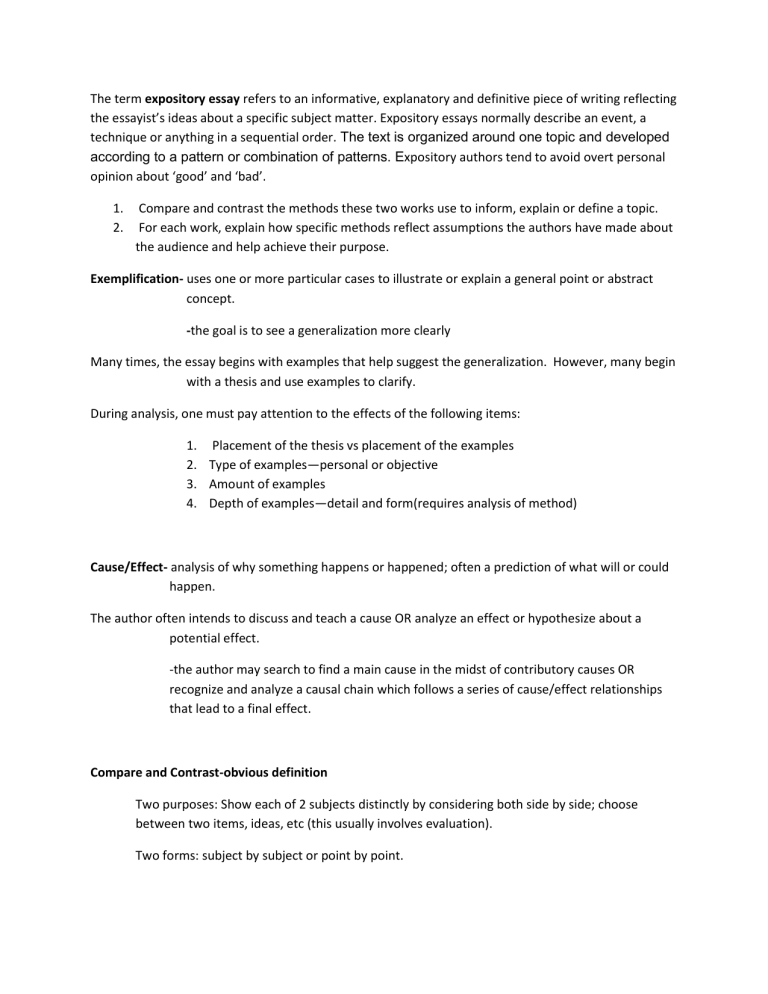
The term expository essay refers to an informative, explanatory and definitive piece of writing reflecting the essayist’s ideas about a specific subject matter. Expository essays normally describe an event, a technique or anything in a sequential order.
The text is organized around one topic and developed according to a pattern or combination of patterns. E xpository authors tend to avoid overt personal opinion about ‘good’ and ‘bad’.
1.
Compare and contrast the methods these two works use to inform, explain or define a topic.
2.
For each work, explain how specific methods reflect assumptions the authors have made about the audience and help achieve their purpose.
Exemplification- uses one or more particular cases to illustrate or explain a general point or abstract concept.
the goal is to see a generalization more clearly
Many times, the essay begins with examples that help suggest the generalization. However, many begin with a thesis and use examples to clarify.
During analysis, one must pay attention to the effects of the following items:
1.
Placement of the thesis vs placement of the examples
2.
Type of examples—personal or objective
3.
Amount of examples
4.
Depth of examples—detail and form(requires analysis of method)
Cause/Effect analysis of why something happens or happened; often a prediction of what will or could happen.
The author often intends to discuss and teach a cause OR analyze an effect or hypothesize about a potential effect.
-the author may search to find a main cause in the midst of contributory causes OR recognize and analyze a causal chain which follows a series of cause/effect relationships that lead to a final effect.
Compare and Contrast-obvious definition
Two purposes: Show each of 2 subjects distinctly by considering both side by side; choose between two items, ideas, etc (this usually involves evaluation).
Two forms: subject by subject or point by point.
Classification and Division
-Making sense out of seemingly unrelated or random ideas about a topic.
-Many essays use both
Classification
-sorting individual items into categories
Purposes: teach or simplify a complex topic; reintroduce a familiar event; evaluate
Principle of Classification-the quality used to group the subject matter; usually governed by the purpose and values of author
-Ask: what does the author hope to accomplish by classifying by this quality
Binary-sort into 2 categories (with or without a feature
Complex-multiple sorting
Division
-Breaking a whole into its parts
Purpose: make a large and complicated subject easier to grasp.
After dividing, you should relate the parts to each other to give a clearer understanding then when you started.
Understanding of the author’s purpose is revealed in the principle used to divide. Essentially, ask yourself what criteria was used to break down the larger subject, what relationship exists between these items, what conclusion can we make about author or purpose
Definitionan essay used to provide a new or revise an existing definition
-extended definition relies on the application of other expository methods.
Purpose: show a reader a subject by establishing boundaries; the writer tries to differentiate the subject from anything that might be confused with it
